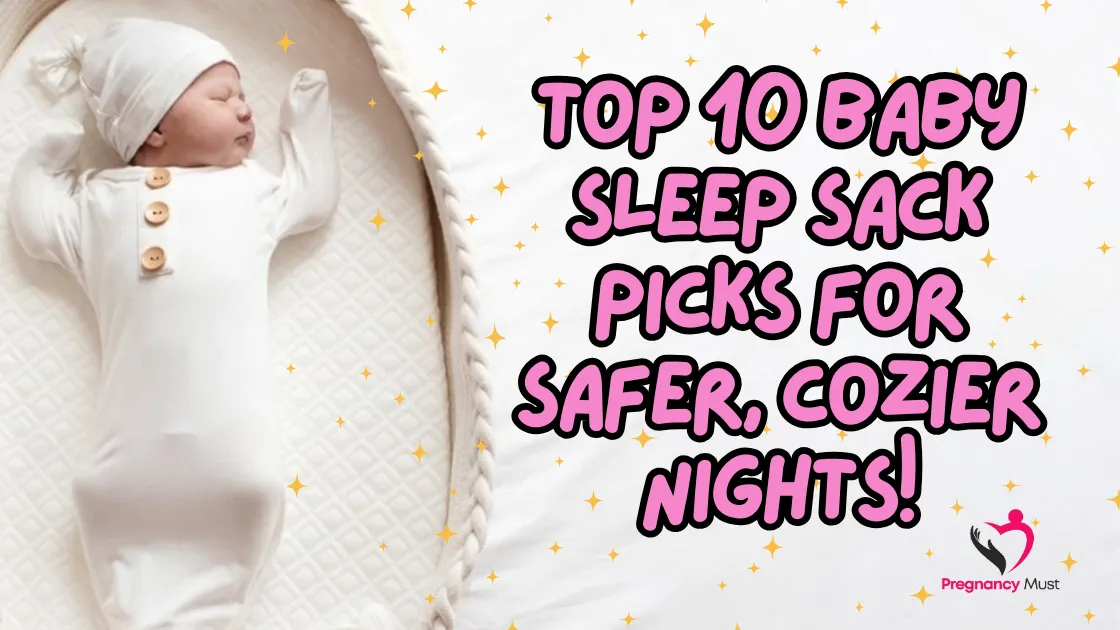When it comes to safe and restful sleep, a baby sleep sack can be a true game-changer for both babies and parents. Designed to replace loose blankets, sleep sacks create a cozy and safer sleep environment that will help baby sleep better. They’re also easy to use, which can make bedtime routines smoother (and less stressful for parents). Whether you’re a first time mom or you’re taking professional care of somebody else’s toddler, it’s easier to get a better night’s sleep for everyone when you have a little bit of help in the form of the perfect baby sleep sack.
Table of Contents
- What is a Baby Sleep Sack?
- Why Choose a Sleep Sack Over a Blanket?
- Benefits of Sleep Sacks for Babies
- Types of Baby Sleep Sacks
- Choosing the Best Sleep Sack for Baby
- Baby Sleep Sack Sizing Guide
- Best Sleep Sacks for Babies
- How Many Baby Sleep Sacks Do You Need?
- When to Stop Using a Baby Sleep Sack
- Tips for Using Sleep Sacks Safely
- Baby Sleep Sacks and Seasons
- Transitioning from Swaddle to Baby Sleep Sack
- Common Mistakes to Avoid
- What Pediatricians Say About Sleep Sacks
- Eco-Friendly and Organic Options
- Baby Sleep Sacks for Special Needs Babies
- FAQ: Baby Sleep Sack
What is a Baby Sleep Sack?
A baby sleep sack is a kind of blanket which is wearable that keeps your little one warm and secure throughout the night. Unlike traditional loose blankets, which pose safety risks, sleep sacks offer a snug, safe sleep environment. They come in a great range of of styles, fabrics, and sizes to accommodate babies of all ages, from newborns to toddlers. The design helps prevent babies from kicking off their covers and waking up cold. Sleep sacks also eliminate the risk of suffocation and entanglement, making them a top choice for parents focused on sleep safety.
Why Choose a Sleep Sack Over a Blanket?
- Safety First: Reduces the risk of Sudden Infant Death Syndrome (SIDS).
- Comfort: Keeps baby at the perfect temperature.
- Convenience: Easy to put on and take off during diaper changes.
- Consistency: Establishes a bedtime cue, aiding in sleep training.
- Versatility: Works across seasons with the right TOG rating.
Benefits of Sleep Sacks for Babies
Promotes Safer Sleep
Using sleep sacks for babies is recommended by pediatricians because they reduce the chance of suffocation and overheating. They also help keep your baby stable while they sleep through the night, something important in the early years. Since it is not recommended that babies under 12 months sleep with loose blankets, sleep sacks make the perfect substitute.
Supports Sleep Routines
Babies quickly associate the sleep sack with bedtime, which helps establish a healthy routine. The routine of putting on a sleep sack sends a calming signal to your baby that it’s time to wind down. This consistency plays a big role in helping infants adapt to a regular sleep schedule. The sooner a baby learns the sleep cues, the better the rest for everyone in the household.
Reduces Startle Reflex
A well-fitted sleep sack baby style helps calm the Moro reflex that often wakes newborns. And with their highly secured fit, you won’t have to worry about jostling arms and legs that could wake baby. As a baby grows and their reflexes diminish, sleep sacks keep providing the secure, cozy feeling and can help them to sleep more soundly and avoid sleepless nights.
Types of Baby Sleep Sacks
Swaddle-Style Sleep Sacks
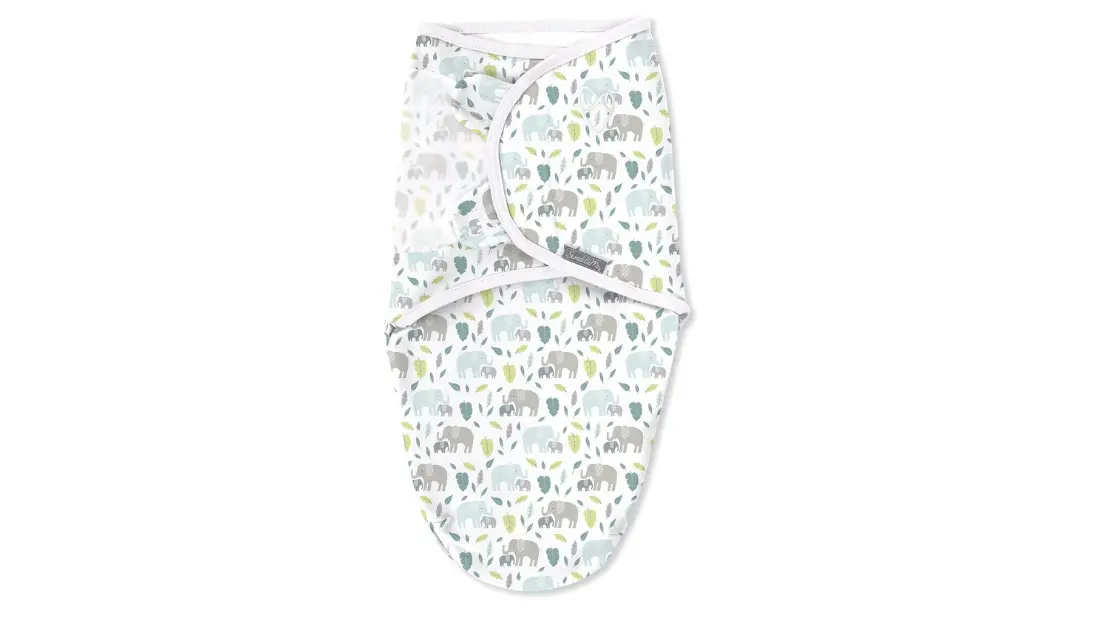
Ideal for newborns who crave the feeling of being held. Your baby’s arms are covered and the sack may feature adjustable wings to give your baby that womblike, snug feeling. They’re great for soothing fussiness and helping to stretch out sleep during those early months.
Transitional Sleep Sacks
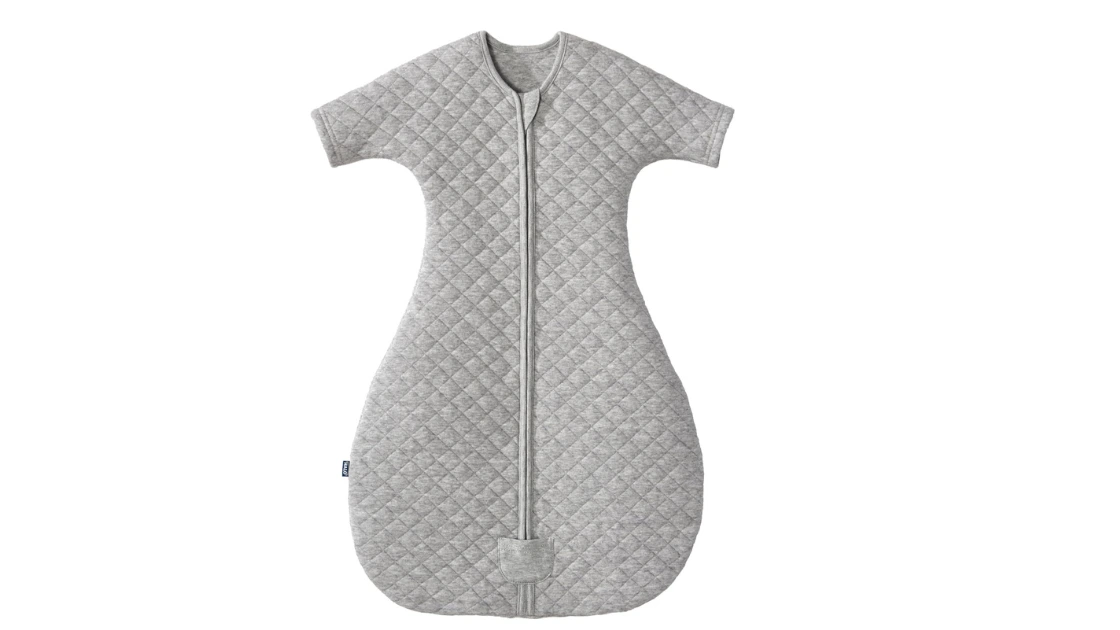
Perfect for babies moving out of the swaddle stage but still needing security. Transitional styles allow for partial arm movement while still providing the cozy, contained feel babies are used to. They help ease the transition from full swaddling to a traditional sleep sack and prevent sleep regressions.
Sleeveless Sleep Sacks
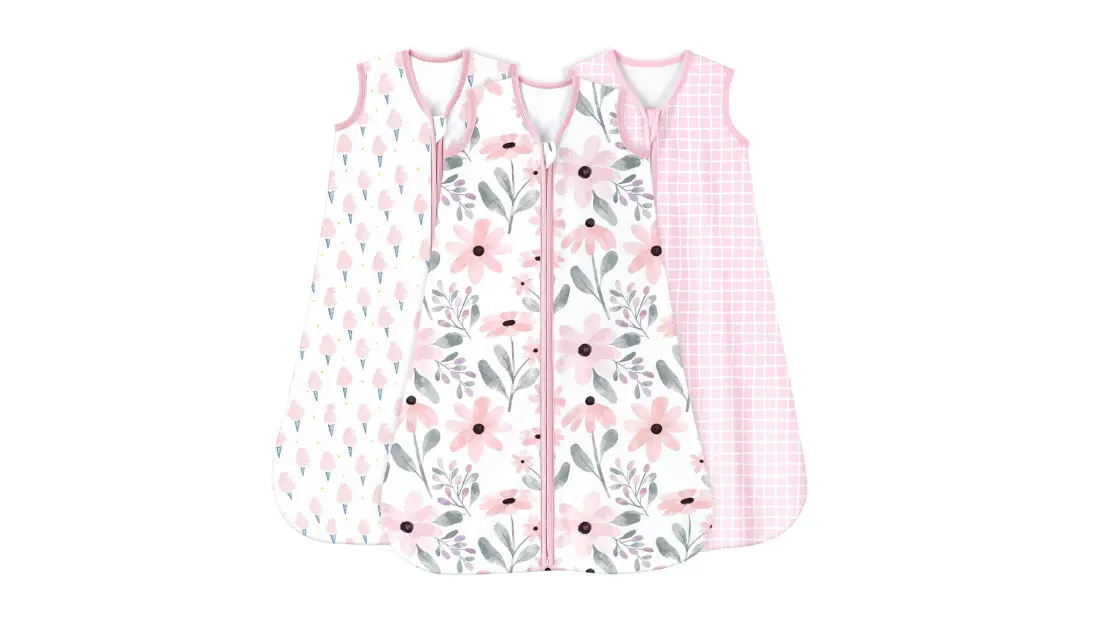
Great for warmer climates or layering over pajamas. Sleeveless designs offer breathability and freedom of movement, while still keeping the torso snug and covered. They’re a popular choice during spring and summer months or for babies who tend to run warm at night.
Winter-Weight Sleep Sacks
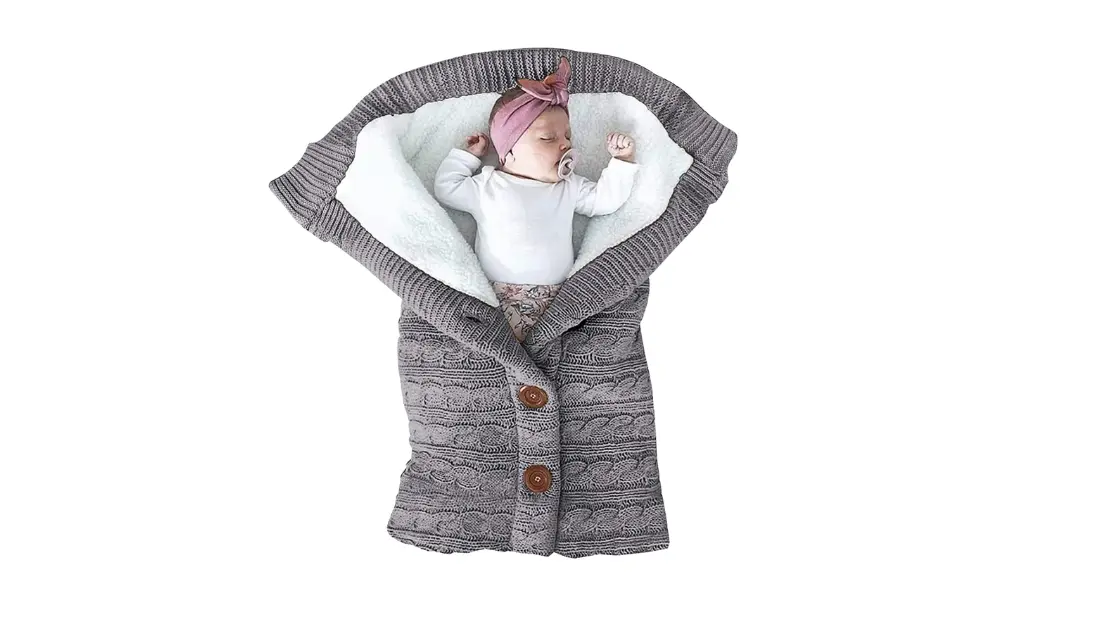
Heavier materials like fleece or down alternatives keep your baby warm in cold weather. These sleep sacks are also warmer and may contain more fabric layers for next to skin insulation. Great for drafty homes or cold temperatures, they keep babies snug and comfortable while eliminating the need for blankets.
Choosing the Best Sleep Sack for Baby
Finding the best sleep sack for baby means considering a few important features. In terms of safety, fabric quality, temperature regulation, and the ability to clean, most parents will want to make those project characteristics paramount. And, you might also want to take into account your baby’s sleeping habits and room temperature. A baby who prefers to kick or wiggle around may want a sleep sack with more leg movement.
Choose cotton, bamboo, or muslin for breathability. Avoid synthetic materials that trap heat. Natural fabrics also feel softer against sensitive skin and help reduce the risk of rashes or irritation. For babies with eczema or allergies, hypoallergenic fabrics are the best choice.
Size & Fit
Make sure the sleep sack fits snugly around the chest but allows hip movement. The right fit prevents the sleep sack from riding up around the baby’s face. When buying, find products that have wide bases, say, to protect the hips and avoid restriction around legs.
Ease of Use
Zippers should zip from bottom to top for easy nighttime diaper changes. Many parents appreciate two-way zippers that offer flexibility and reduce the need to fully undress a sleeping baby. Also look for zipper covers or flaps that will keep from scratching, baby, and keep your child comfortable.
Baby Sleep Sack Sizing Guide
Baby’s Age | Weight | Recommended Size |
0-3 months | 7-14 lbs | Small |
3-6 months | 14-20 lbs | Medium |
6-12 months | 20-28 lbs | Large |
12-24 months | 28-36 lbs | Extra Large |
Follow the manufacturer’s sizing chart and you’ll get zero risk of it not fitting your head perfectly. Size up only if the sack remains fitted around the arms and chest. An oversize sack can be dangerous. Also keep in mind that the sizing might be a bit different between brands, so it’s a good idea to check the size chart before ordering.
Best Sleep Sacks for Babies
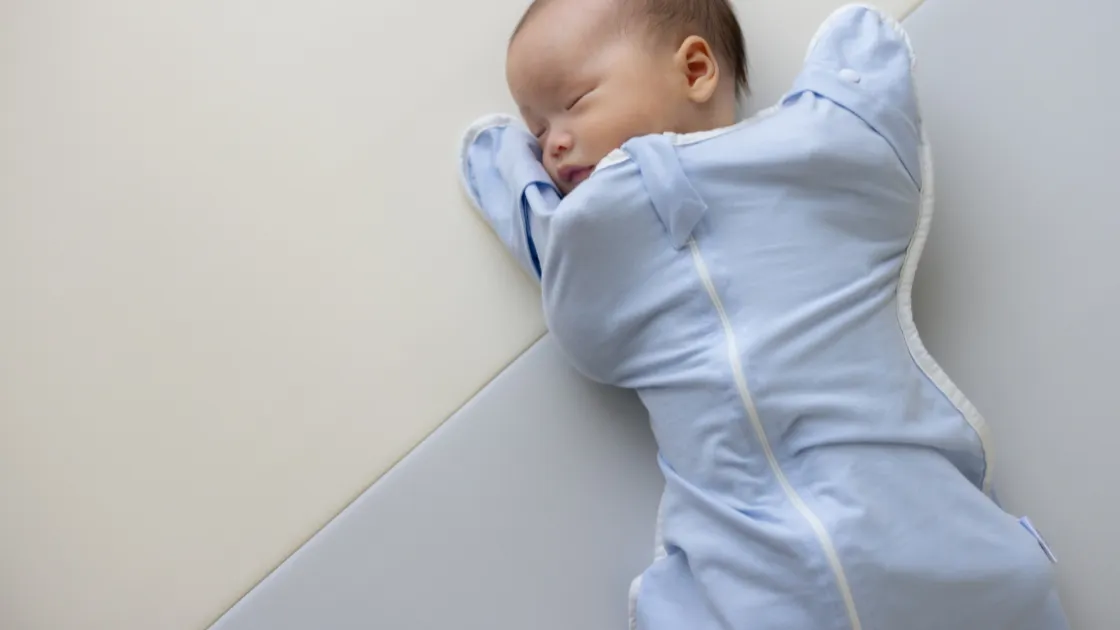
- Halo SleepSack
- Cotton and fleece options
- Inverted zipper
- Trusted hospital brand
- Great for newborns and above
- Washable in machines and afordable
- Kyte Baby Sleep Bag
- Bamboo rayon made
- Soft, hypoallergenic, and temperature-regulating
- Available in a wide range of sizes and TOG levels
- Stylish colors and durable material
- Burt’s Bees Baby Beekeeper
- Organic cotton
- Budget-Friendly and GOTS-certified
- Features easy-zip functionality
- Eco-conscious and soft on sensitive skin
- Woolino 4 Season Sleep Sack
- Merino wool interior
- Works year-round
- Ideal for room temperatures between 63°F-77°F
- Comes with travel-friendly features like seatbelt slots
- Nested Bean Zen Sack
- Lightly weighted to mimic a caregiver’s touch
- Helps with sleep regression
- Designed by sleep consultants
- Supports sleep training and deeper rest
- Ergobaby On The Move Sleep Bag
- Converts from sleep sack to romper
- Ideal for babies learning to walk
- Breathable 100% cotton
- Great for active sleepers
- Little Unicorn Cotton Muslin Sleep Bag
- Made from soft muslin cotton
- Lightweight and breathable
- Cute, stylish prints
- Machine washable
- Aden + Anais Essentials Sleeping Bag
- Classic muslin design
- Trusted baby brand
- Pre-washed for softness
- Wide range of sizes
- Love to Dream Swaddle UP Transition Bag
- Ideal for swaddle transition
- Zippered wing removal
- Snug fit with freedom of movement
- Available in multiple TOG ratings
- Gunamuna Sleep Bag
- Luxury sleep sack with down alternative fill
- Features a WONDERZiP design
- Ultra-soft bamboo viscose fabric
- Designed for ultimate nighttime comfort
- Lightly weighted to mimic a caregiver’s touch
- Helps with sleep regression
- Designed by sleep consultants
- Supports sleep training and deeper rest
How Many Baby Sleep Sacks Do You Need?
Most parents find that 2–3 sleep sacks are ideal. One for use, one in the laundry, and a backup just in case. It’s helpful to have a mix of light and warm sleep sacks to suit changing weather or travel conditions. If your baby goes to daycare, consider keeping an extra one in the diaper bag or cubby.
When to Stop Using a Baby Sleep Sack
Babies usually stop using sleep sacks after they are about 24-36 months old. Signs that it’s time to quit:
- Climbing out of cribs
- Unzipping the sack repeatedly
- Showing preference for blankets
Here are some opting to pair themselves with a toddler blanket or sleep suit, instead. Always let your child lead and maintain safety as the pinnacle throughout the transition.
Tips for Using Sleep Sacks Safely
- Always lay your baby on their back
- Avoid overdressing underneath
- Use in a crib with no other loose bedding
- Make sure the neckline and armholes are snug
- Stop use if baby shows signs of climbing
Additionally, check your sleep sack regularly for signs of wear and tear. Loose stitching, broken zippers, or thinning fabric can compromise safety. Wash according to label instructions to maintain integrity.
Baby Sleep Sacks and Seasons
Summer Sleep Sack Options
Try 0.2–0.5 TOG. These are light and breathable. Summer sleep sacks are frequently made of muslin or bamboo to promote maximum airflow. Wear it with a short sleeve bodysuit or a pair of lightweight pajamas for best result.
Winter Sleep Sack Options
Choose a TOG rating between 2.5–3.5 for additional insulation. Fleece or quilted cotton is good way to go. Always check the room temperature and your baby’s body temperature (back of the neck) to prevent him/her from overheating.
Transitioning from Swaddle to Baby Sleep Sack
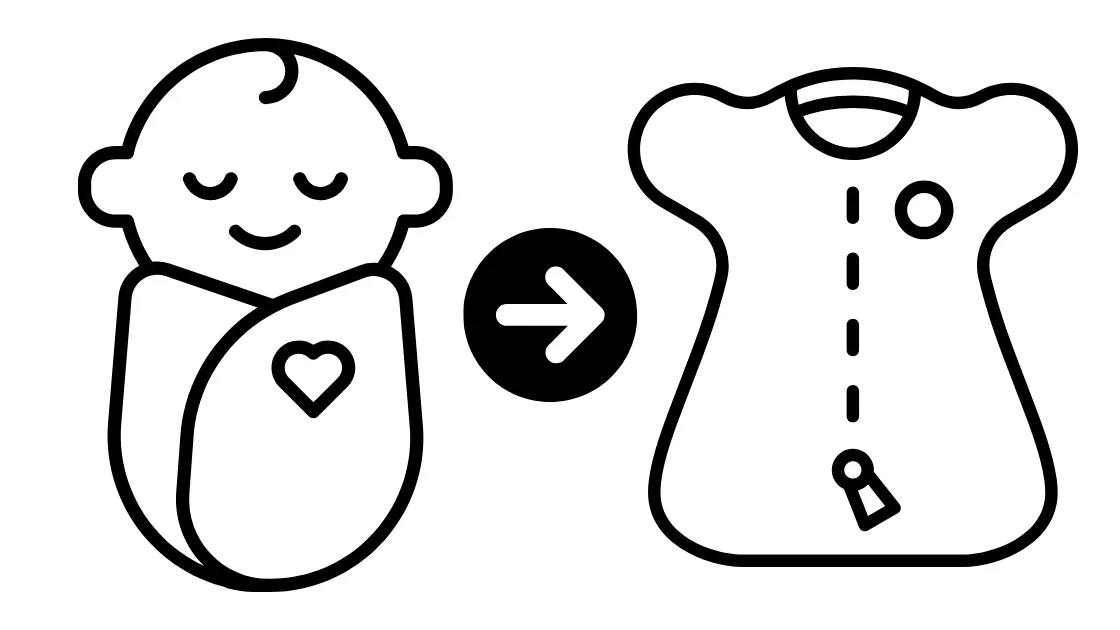
Swaddle to sleep sack transition generally happens around 8-12 weeks, when baby starts to roll. Alternatively, opt for a sleep sack that lets arms move freely while keeping warm. This guarantees that your baby can roll boldly and find your babys favorite sleep position so you can get them down easier resulting in less tear filled nights.
Start with naps in the sleep sack, then move to nights in the sleep sack. Offer items that soothe baby to sleep such as a soother or singing a lullaby as part of the bedtime transition to decrease any tension baby may feel.
Start with naps in the sleep sack and progress to overnight in the sleep sack. Offer something comforting (a pacifier, a lullaby) when you switch beds to avoid upsetting your baby.
Common Mistakes to Avoid
- Using the wrong size
- Overdressing your baby
- Choosing non-breathable fabrics
- Ignoring TOG ratings
- Leaving damaged sleep sacks in use
Always read and follow manufacturer guidelines. Avoid DIY modifications as they may affect safety features.
What Pediatricians Say About Sleep Sacks
Most pediatricians agree that baby sleep sacks reduce the risk of unsafe sleeping and help establish routines. Many hospitals send newborns home with a sleep sack. They emphasize the importance of safe sleep environments and note that wearable blankets help parents comply with best practices.
Sleep sacks also support self-soothing habits in infants and reduce the number of nighttime awakenings. Pediatricians encourage consistent use as part of a calming bedtime routine.
Eco-Friendly and Organic Options
When you select organic baby sleep sacks, you are getting fewer chemicals and safer materials. Check for GOTS (Global Organic Textile Standard) certification. Organic choices are especially beneficial for babies who have sensitive skin or allergies. Sustainable sleep sacks are also a way to cut down on your family’s environmental impact.
Some of the well known brands have also gone for biodegradable packaging or practise environmentally friendly production. When buying, always look for ethical labor practices and third-party certifications.
Baby Sleep Sacks for Special Needs Babies
A few brands make weighted or specially shaped versions of the sleep sack for babies with sensory processing disorders, autism or developmental delays. These solutions provide calming pressure and a highly increased sense of security to help her get the rest she needs. Never disregard professional medical directions or delay in seeking it as something you have read on this website.
Sensory-sensitive sleep sacks can include tagless seams, super-soft lining, and easy-closure options. These little subtleties can make all the difference for sleep resistance in your babes who are all-the-feelings super sensitives.
FAQ: Baby Sleep Sack
What is a TOG rating in baby sleep sacks?
TOG (Thermal Overall Grade) measures insulation. The higher the TOG, the warmer the sleep sack. It’s important to match the TOG rating with room temperature for safe sleep.
Can babies wear pajamas under sleep sacks?
Yes, but avoid thick pajamas if the sack is already warm. Layering should always be based on the TOG rating and your baby’s comfort.
How do I wash a sleep sack?
Most are machine washable. Use gentle detergent and cold water. Avoid fabric softeners while washing that can break down fibers.
Are sleep sacks safe for newborns?
Yes. Choose a swaddle-style for the first few weeks. Ensure a optimum comfort but not tight fit around the neck and arms.
What’s the difference between sleep sack and swaddle?
Swaddles wrap the baby’s arms, sleep sacks allow for more movement and are better for older babies. Swaddles are best for newborns up to 2–3 months.
Stay tuned with Pregnancy Must and wish you a happy parenting!
Explore More –
